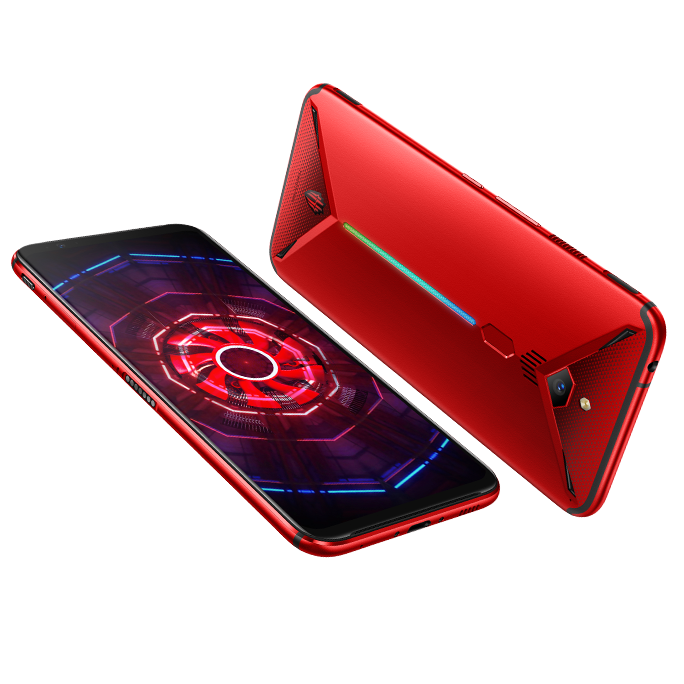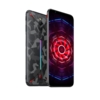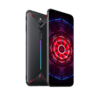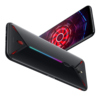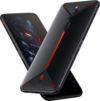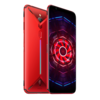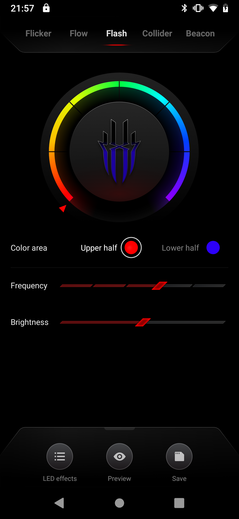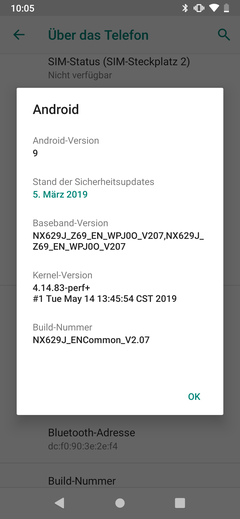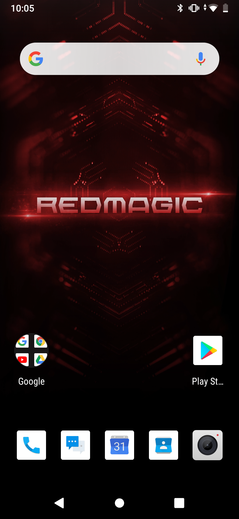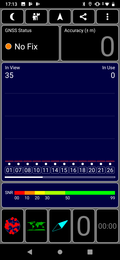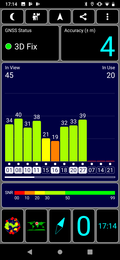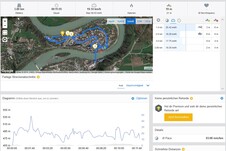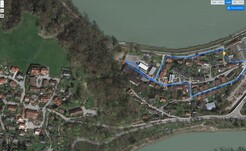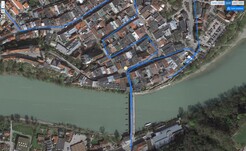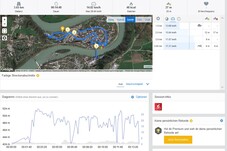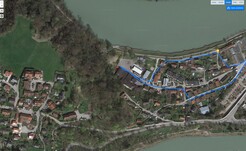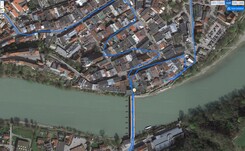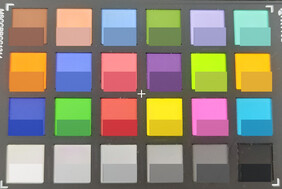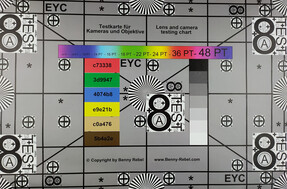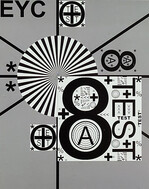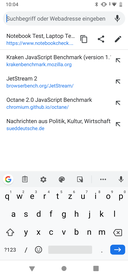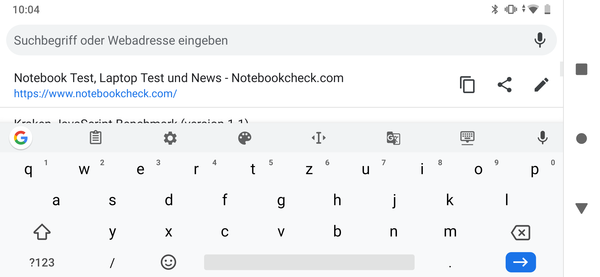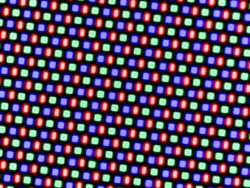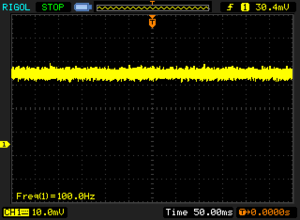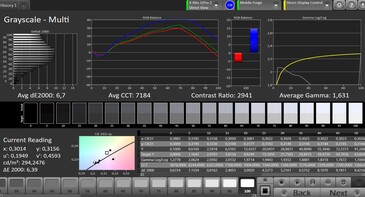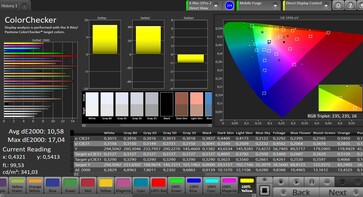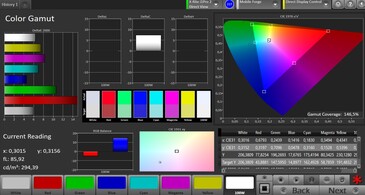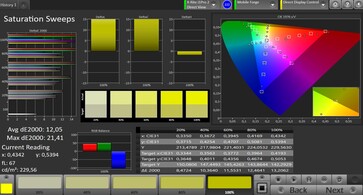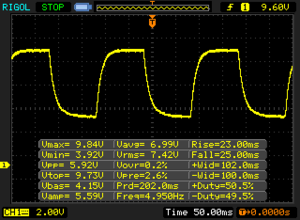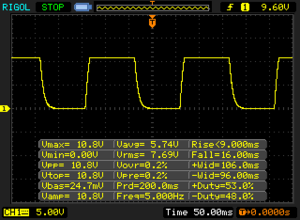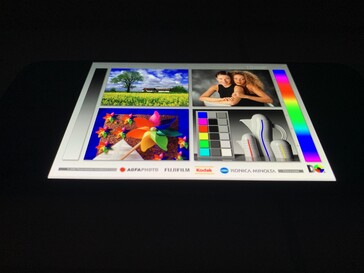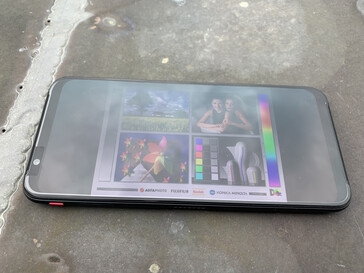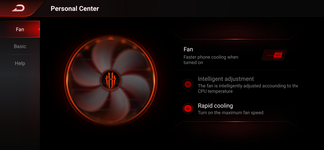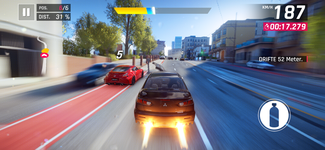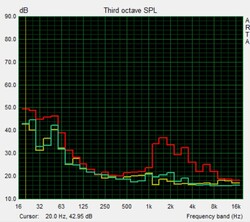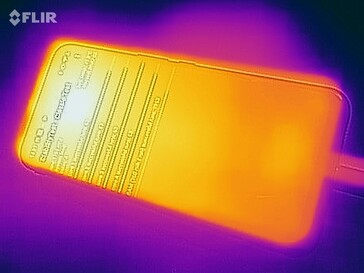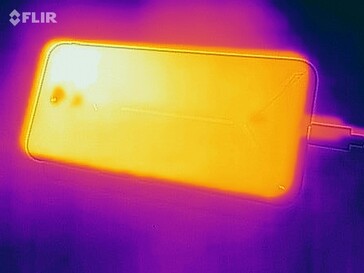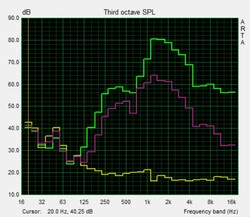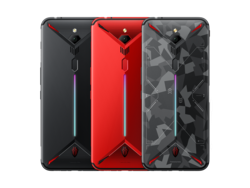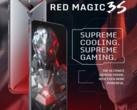Nubia Red Magic 3 Smartphone Review: 8K videos and active cooling
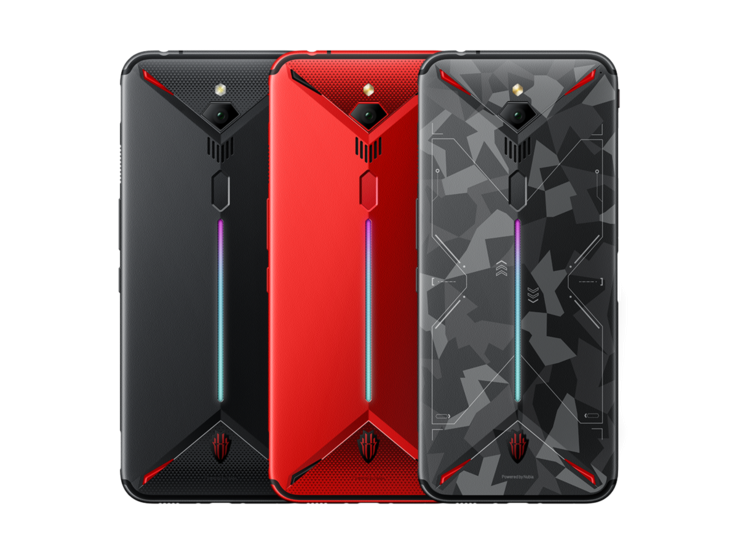
The Nubia Red Magic 3 is a gaming smartphone with high aspirations. The device has an exceptional design, a huge battery, a 90 Hz display and a powerful SoC, all of which should make it superior compared to other high-end smartphones, especially with regards to gaming. Nubia has released its predecessor, the Red Magic Mars, in Europe, but its availability is limited. Hence, this is the first Nubia gaming smartphone to grace our offices.
The Chinese manufacturer has since established itself in Europe and has a website from which you can purchase the Red Magic 3. Nubia has developed a European variant of the device too, which supports regional LTE bands and ships with stock Android. The company also includes a matching charger, which is handy.
Third-party retailers such as Trading Shenzhen also sell the EU version, for reference. Trading Shenzhen also provided us with our Red Magic 3 review unit for full disclosure. The device currently sells for between €427 (~$483) and €587 (~$663) depending on the model that you buy.
We have decided to compare the Red Magic 3 against other gaming smartphones, although please keep in mind that they are often considerably more expensive than the Nubia. We shall also compare our review unit against the ASUS ROG Phone, Razer Phone 2 and the Xiaomi Black Shark 2. We will consider the Red Magic 3 against cheaper devices such as the Nokia 8.1.
Case
The Red Magic 3 certainly looks the part. Nubia has adorned the device full of angular shapes such as those housing the fingerprint scanner and camera, along with a large RGB LED strip running down the centre of the back case. The company currently sells the Red Magic 3 in black or red, which is a little unusual. The 12 GB of RAM and 256 GB of storage version also has a unique camouflage look to it.
Nubia includes the RGB LED strip on all versions of the Red Magic 3 and pre-installs software that allows you to customise its look. Alternatively, you could choose one of the pre-built profiles, of which there are a few.
Our review unit weighs a hefty 215 g (~7.6 oz), making it heavier than all but the Razer Phone 2 of our comparison devices. Its rounded corners and curved back feels good in the hand though. Our review unit is well-built and does not flex or deform if we try to twist it. Incidentally, the display is notch-free, which has now become something worth mentioning. Its screen-to-body ratio remains high though thanks to its narrow bezels.
Connectivity
As mentioned earlier, Nubia sells two versions of the Red Magic 3, one with 8 GB of RAM and 128 GB of storage and another with 12 GB of RAM and 256 GB of storage. Our review unit is the former. Nubia currently only sells the latter in camo, although this model was unavailable at the time of testing.
Neither version has expandable storage or NFC. Both have USB 3.0 Type-C ports though. Likewise, Nubia has included a 3.5 mm headphone jack and two nano-SIM card slots.
Software
As we mentioned earlier, the European version of the Red Magic 3 ships with a stock version of Android 9.0 Pie. Our review unit only had the March 2019 set of Android security patches installed when we received it, which were almost three months old at the time of testing.
Nubia pre-installs a few in-house apps on top of the suite of Google services and makes a few UI changes from stock Android. The company restricts these to a different icon pack and a branded wallpaper, which should take no time to get used to. All these in-house apps are only available in English, which is a shame if you want to use a different system language.
The real highlight of the Nubia-branded software in our opinion is that which you activate by sliding the gaming switch. Doing so puts the Red Magic 3 into gaming mode, which mutes all apps that could potentially be a distraction while gaming. It also enables the fan, about which we shall discuss more in the Emission section of the review. The mode also enables the touch-sensitive shoulder buttons, both of which are customisable from within the included app. Overall, Nubia has done a good job of collating all the various gaming settings into one well thought out app.
Communication & GPS
The European version of the Red Magic 3 has all the LTE coverage that you would need to connect to an LTE network. The device also supports enough bands to keep you covered when travelling abroad. Our review unit maintained stable, albeit not exceptional, reception when connected to the German D2 mobile network during our tests.
The Red Magic 3 has worryingly sub-standard Wi-Fi performance though. Our review unit averaged just 208 MBit/s download speeds and 105 MBit/s upload speeds in iperf3 Client, which is significantly lower than the likes of the Black Shark 2 and the Razer Phone 2. The Red Magic 3 only performs better than the ASUS ROG Phone of our comparison devices.
| Networking | |
| iperf3 transmit AX12 | |
| Xiaomi Black Shark 2 | |
| Razer Phone 2 | |
| Nokia 8.1 | |
| Nubia Red Magic 3 | |
| Asus ROG Phone | |
| iperf3 receive AX12 | |
| Razer Phone 2 | |
| Xiaomi Black Shark 2 | |
| Nokia 8.1 | |
| Nubia Red Magic 3 | |
| Asus ROG Phone | |
The device does not have great GPS connectivity either. The GPS Test established that our review unit can find a satellite with up to 4 metres (~13 ft) accuracy outdoors, but it cannot locate us indoors.
Things were only marginally better in our bike ride test, where we compared our test device’s location accuracy against our reference Garmin Edge 520 bike computer. The Red Magic 3 regularly cuts corners to keep up with us. Accordingly, the device plotted a 150 m (~164 yd) shorter router than the Garmin did. In short, we would recommend using a different device if you need precise location data.
Telephone Features & Call Quality
Nubia pre-installs the Google suite of telephony apps for handling calls and messages. All work just as well as they do on other devices that we tested.
The Red Magic 3 also has below-average call quality. The earpiece sounds tinny, and we often found it difficult to hear the person at the other end of the call. Moreover, the built-in microphones cannot pick out our voice cleanly. Calls over handsfree are better, but the speakers make incoming voices sound dull.
Cameras
Single rear-facing cameras have become a rarity, although you do not need several camera sensors to take good photos, as demonstrated by the Pixel series. Nubia has equipped the Red Magic 3 with the popular Sony IMX586, a 48 MP sensor that we have previously covered in our OnePlus 7 Pro and Xiaomi Mi 9 reviews.
Again, a higher megapixel count does not necessarily result in better photos, as it can mean that more pixels are crammed onto the same sensor size, resulting in less light reaching each pixel. This is not the case with the IMX586 though, as it can interpolate 4 pixels into one larger pixel, effectively creating a 12 MP image instead.
Correspondingly, our review unit takes decent looking photos in good light conditions. Dark areas are a little bit too underexposed for our tastes, and seem lighter, but the quality of our test shots still impressed us. The sensor also performs well in low-light, although photos like scene 3 lack sharpness. Low-light conditions highlight the issue of dark areas being underexposed too.
One major selling point of the Red Magic 3, and one which Nubia focusses heavily in its advertising is its ability to shoot videos in 8K. This is quite the coup for the Red Magic 3, as no other smartphone can record in 4320p at 30 FPS. Nubia still states that the technology is in beta, but the results are impressive, nonetheless. Not only does the exposure adjust well to changing lighting conditions, but the image quality is also sharp. Zooming in also reveals numerous details that 4K videos could not capture. However, this mode works best in good ambient lighting. We would not recommend shooting in 8K in low-light as the sensor noticeably underexposes the scene.
The Red Magic 3 can also record 4K videos in 60 FPS, another feather in the cap of the gaming smartphone. Overall, Nubia has done well here, although optical image stabilisation (OIS) is sorely missing.
We were less impressed by the HDR mode though, which Nubia also says is still in beta. Currently, the mode oversaturates colours to the extent that the resulting videos look more like pop art than realistic high-contrast recordings.
The Red Magic 3 also has a 16 MP front-facing camera. The sensor takes detailed and impressive selfies.
We also subjected our review unit to further camera tests under controlled lighting conditions. As demonstrated by the photo below, most colours look noticeably washed out next to the ColorChecker Passport reference colour. The rear-facing camera did a good job at captured our test chart though. The photo is uniformly sharp, and there is hardly any drop off in contrast, even at the edges of the chart.
Accessories & Warranty
The Red Magic 3 comes with a quick-charge power supply in the box along with a USB Type-C cable and a SIM tool. Nubia sells additional chargers for €10 (~$11.30) each and other general accessories such as a screen protector and headphones.
The company also sells a docking station that it calls the Magic Adapter, which utilises the proprietary port on the side of the Magic 3. The company does not currently list it on its European website, nor can we find it for sale at any third-party retailers. It also does not sell any gaming specific accessories either like ASUS does for its ROG Phone.
The Red Magic 3 comes with 24 months limited manufacturer’s warranty. Please see our Guarantees, Return Policies & Warranties FAQ for country-specific information.
Input Devices & Operation
According to Nubia, the touchscreen in the Red Magic 3 scans the surface 240 times a second, which gives the device comparatively low touch latency. In practical terms, we noticed no input lags, with our presses replicated quickly onscreen. The protective glass top layer has a pleasantly smooth finish too, on which we found it easy to perform multi-finger gestures.
Nubia has also included three hardware buttons, although they are a bit narrow for our liking. The power and volume buttons have good pressure points, but they feel rather cheap. Nubia has done a better job on the slider mechanism though, which activates the smartphone’s gaming mode. The button has a textured finish that is easy to find when not looking at the device, while the mechanism has a pleasing resistance.
The Red Magic 3 has a fingerprint sensor too, which Nubia has placed on the back of the device. The one in our review unit recognises our registered fingerprints reliably and unlocks the device quickly.
Display
Nubia has equipped the Red Magic 3 with a 6.65-inch display. On the face of it, the AMOLED panel should be one of the highlights of the device with its 90 Hz refresh rate, HDR support, fast response times, and low touch lag. The decision to include an AMOLED panel makes sense too as it should be more colour accurate than comparable IPS panels. Its 1,080p resolution will not set the world alight, but it puts the Magic 3 on par with the likes of the Black Shark 2 and the ASUS ROG Phone.
This all sounds great, but it quickly became apparent that Nubia has equipped the Magic 3 with an underwhelming display. The one in our review unit achieved an average maximum luminosity of 298 cd/m² according to X-Rite iPro 2 and 333 cd/m² with the brightness sensor exposed directly to bright light. By contrast, most AMOLED or OLED panels average around 600 cd/m², making the Magic 3 noticeably darker than its contemporaries. Moreover, the panel is only 80% evenly lit, with the upper area of the screen being much brighter than the rest of the display when holding it in portrait mode.
| |||||||||||||||||||||||||
Brightness Distribution: 80 %
Center on Battery: 294 cd/m²
Contrast: ∞:1 (Black: 0 cd/m²)
ΔE ColorChecker Calman: 10.58 | ∀{0.5-29.43 Ø4.78}
ΔE Greyscale Calman: 6.7 | ∀{0.09-98 Ø5}
146.5% sRGB (Calman 2D)
Gamma: 1.631
CCT: 7184 K
| Nubia Red Magic 3 AMOLED, 2340x1080, 6.7" | Razer Phone 2 IGZO LCD, UltraMotion 120 Hz Display, 2560x1440, 5.7" | Asus ROG Phone AMOLED, 2160x1080, 6" | Xiaomi Black Shark 2 AMOLED, 2340x1080, 6.4" | Nokia 8.1 IPS, 2246x1080, 6.2" | |
|---|---|---|---|---|---|
| Screen | 63% | 50% | 37% | 56% | |
| Brightness middle (cd/m²) | 294 | 600 104% | 597 103% | 409 39% | 567 93% |
| Brightness (cd/m²) | 298 | 577 94% | 637 114% | 412 38% | 547 84% |
| Brightness Distribution (%) | 80 | 92 15% | 83 4% | 95 19% | 92 15% |
| Black Level * (cd/m²) | 0.31 | 0.61 | |||
| Colorchecker dE 2000 * | 10.58 | 3.43 68% | 5.12 52% | 5.2 51% | 4.39 59% |
| Colorchecker dE 2000 max. * | 17.04 | 6.36 63% | 10.9 36% | 8.9 48% | 7.28 57% |
| Greyscale dE 2000 * | 6.7 | 4.4 34% | 7.3 -9% | 4.8 28% | 4.9 27% |
| Gamma | 1.631 135% | 2.388 92% | 2.203 100% | 2.21 100% | 2.248 98% |
| CCT | 7184 90% | 6069 107% | 7371 88% | 7430 87% | 7642 85% |
| Contrast (:1) | 1935 | 930 |
* ... smaller is better
Screen Flickering / PWM (Pulse-Width Modulation)
| Screen flickering / PWM detected | 367.6 Hz | ||
The display backlight flickers at 367.6 Hz (worst case, e.g., utilizing PWM) . The frequency of 367.6 Hz is relatively high, so most users sensitive to PWM should not notice any flickering. However, there are reports that some users are still sensitive to PWM at 500 Hz and above, so be aware. In comparison: 53 % of all tested devices do not use PWM to dim the display. If PWM was detected, an average of 8111 (minimum: 5 - maximum: 343500) Hz was measured. | |||
Nubia includes several display colour options, although we left our review unit at stock settings for our tests. It quickly became apparent that the display oversaturates colours. We did not need a measuring device to pick this up either and could make it out with our eyes. Red and green tones are particularly afflicted, while grey tones have a blue tint to them. Nubia calls this mode “colourful". Fitting.
DeltaE deviations from sRGB are rather high too, although the display in our review unit still covers the entire colour space. Nubia has also included a preset called “natural", but this makes vivid colours appear noticeably more muted. The display does look less oversaturated overall, though.
Disappointingly, Nubia has equipped the Magic 3 with a panel that uses pulse-width modulation (PWM) to regulate luminosity, which can cause headaches and eye strain for some people. We measured the display flickering at 367.6 Hz across the whole brightness spectrum, which is low enough to cause health issues for those who are PWM sensitive. Enabling the 90 Hz mode should mitigate this PWM frequency though.
Display Response Times
| ↔ Response Time Black to White | ||
|---|---|---|
| 6 ms ... rise ↗ and fall ↘ combined | ↗ 3 ms rise | |
| ↘ 3 ms fall | ||
| The screen shows very fast response rates in our tests and should be very well suited for fast-paced gaming. In comparison, all tested devices range from 0.1 (minimum) to 240 (maximum) ms. » 17 % of all devices are better. This means that the measured response time is better than the average of all tested devices (20.2 ms). | ||
| ↔ Response Time 50% Grey to 80% Grey | ||
| 10 ms ... rise ↗ and fall ↘ combined | ↗ 5 ms rise | |
| ↘ 5 ms fall | ||
| The screen shows good response rates in our tests, but may be too slow for competitive gamers. In comparison, all tested devices range from 0.165 (minimum) to 636 (maximum) ms. » 22 % of all devices are better. This means that the measured response time is better than the average of all tested devices (31.6 ms). | ||
The AMOLED panel has stable viewing angles, so you should have no issues with reading it from practically any angle. However, its low maximum brightness means that you will struggle to read it outside under bright direct sunlight.
Performance
The Snapdragon 855 is the performance SoC of choice for many OEMs this year that do not develop in-house chips. However, only the Black Shark 2 comes with Qualcomm’s flagship chipset of our comparison devices, which should give the Red Magic 3 an obvious advantage of other gaming smartphones such as the ASUS ROG Phone and the Razer Phone 2. The Snapdragon 855 struggles in some benchmarks compared to its predecessor though, especially in the Compute RenderScript portion of Geekbench 4.3. The Snapdragon 710 powered Nokia 8.1 is nowhere near our review unit in any synthetic benchmark.
The Red Magic 3 performs fantastically in daily use too. Menu animations are always smooth even during heavy multitasking, while sophisticated apps pose no problem for its Snapdragon 855 SoC and 8 GB of RAM.
| PCMark for Android | |
| Work performance score (sort by value) | |
| Nubia Red Magic 3 | |
| Razer Phone 2 | |
| Asus ROG Phone | |
| Xiaomi Black Shark 2 | |
| Nokia 8.1 | |
| Average Qualcomm Snapdragon 855 (10330 - 14439, n=19) | |
| Work 2.0 performance score (sort by value) | |
| Nubia Red Magic 3 | |
| Razer Phone 2 | |
| Asus ROG Phone | |
| Xiaomi Black Shark 2 | |
| Nokia 8.1 | |
| Average Qualcomm Snapdragon 855 (8342 - 11440, n=19) | |
| GFXBench 3.1 | |
| on screen Manhattan ES 3.1 Onscreen (sort by value) | |
| Nubia Red Magic 3 | |
| Razer Phone 2 | |
| Asus ROG Phone | |
| Xiaomi Black Shark 2 | |
| Nokia 8.1 | |
| Average Qualcomm Snapdragon 855 (27 - 58, n=20) | |
| Average of class Smartphone (11 - 166, n=158, last 2 years) | |
| 1920x1080 Manhattan ES 3.1 Offscreen (sort by value) | |
| Nubia Red Magic 3 | |
| Razer Phone 2 | |
| Asus ROG Phone | |
| Xiaomi Black Shark 2 | |
| Nokia 8.1 | |
| Average Qualcomm Snapdragon 855 (35 - 71, n=20) | |
| Average of class Smartphone (8.4 - 413, n=158, last 2 years) | |
| AnTuTu v7 - Total Score (sort by value) | |
| Nubia Red Magic 3 | |
| Razer Phone 2 | |
| Asus ROG Phone | |
| Xiaomi Black Shark 2 | |
| Nokia 8.1 | |
| Average Qualcomm Snapdragon 855 (217967 - 398720, n=16) | |
The same goes for browser benchmarks, where our review unit regularly comes out on top in our comparison tables. Subjectively, browsing the web on Chrome 74 feels fast with media content loading promptly and without delay.
| Jetstream 2 - 2.0 Total Score | |
| Average of class Smartphone (23.8 - 387, n=154, last 2 years) | |
| Nubia Red Magic 3 (Chrome 74) | |
| Average Qualcomm Snapdragon 855 (45.5 - 67, n=16) | |
| Asus ROG Phone (Chrome 74) | |
| Xiaomi Black Shark 2 (Chrome 73.0.3683.90) | |
| WebXPRT 3 - Overall | |
| Average of class Smartphone (38 - 380, n=35, last 2 years) | |
| Nubia Red Magic 3 (Chrome 74) | |
| Average Qualcomm Snapdragon 855 (90 - 129, n=20) | |
| Asus ROG Phone (Chrome 70) | |
| Razer Phone 2 (Chrome 68) | |
| Xiaomi Black Shark 2 (Chrome 73.0.3683.90) | |
| Nokia 8.1 (Chrome 71) | |
| Octane V2 - Total Score | |
| Average of class Smartphone (2228 - 121337, n=201, last 2 years) | |
| Average Qualcomm Snapdragon 855 (17011 - 33918, n=21) | |
| Nubia Red Magic 3 (Chrome 74) | |
| Asus ROG Phone (Chrome 70) | |
| Razer Phone 2 (Chrome 68) | |
| Xiaomi Black Shark 2 (Chrome 73.0.3683.90) | |
| Nokia 8.1 (Chrome 71) | |
| Mozilla Kraken 1.1 - Total | |
| Nokia 8.1 (Chrome 71) | |
| Xiaomi Black Shark 2 (Chrome 73.0.3683.90) | |
| Nubia Red Magic 3 (Chrome 74) | |
| Razer Phone 2 (Chrome 68) | |
| Asus ROG Phone (Chrome 70) | |
| Average Qualcomm Snapdragon 855 (1852 - 2611, n=19) | |
| Average of class Smartphone (257 - 28190, n=156, last 2 years) | |
* ... smaller is better
The Magic 3 also has UFS 2.1 flash storage, as do many modern flagships. Nubia has equipped the device with comparatively fast storage that just loses out to the ASUS ROG Phone in AndroBench. This gives the Magic 3 a small speed advantage when loading large apps and transferring data compared to the likes of the Black Shark 2 and the Razer Phone 2.
| Nubia Red Magic 3 | Razer Phone 2 | Asus ROG Phone | Xiaomi Black Shark 2 | Nokia 8.1 | Average 128 GB UFS 2.1 Flash | Average of class Smartphone | |
|---|---|---|---|---|---|---|---|
| AndroBench 3-5 | -27% | 2% | -21% | -52% | 9% | 314% | |
| Sequential Read 256KB (MB/s) | 777 | 733 -6% | 725 -7% | 793 2% | 279.3 -64% | 761 ? -2% | 2223 ? 186% |
| Sequential Write 256KB (MB/s) | 190.5 | 194.8 2% | 243.3 28% | 195.6 3% | 203.8 7% | 296 ? 55% | 1838 ? 865% |
| Random Read 4KB (MB/s) | 152.2 | 124.3 -18% | 141.6 -7% | 145.2 -5% | 69.9 -54% | 154 ? 1% | 295 ? 94% |
| Random Write 4KB (MB/s) | 160.1 | 23.99 -85% | 152 -5% | 25 -84% | 7.3 -95% | 130.4 ? -19% | 335 ? 109% |
| Sequential Read 256KB SDCard (MB/s) | 86.6 ? | 84.7 ? | 76 ? | ||||
| Sequential Write 256KB SDCard (MB/s) | 62.2 ? | 58.3 ? | 59.6 ? |
Games
In short, the Red Magic 3 lives up to its billing as an excellent gaming smartphone. We have sung the praises of the Adreno 640 in previous reviews such as the OnePlus 7 Pro and Xiaomi Mi 9, which delivers first-rate graphics performance. The SoC allows the Magic 3 to take advantage of its 90 Hz display in games that support the refresh rate, while the special gaming mode proved useful during our tests as it greatly reduced distractions when gaming.
Nubia has also included something called Game Space 2.0, which you activate by sliding the button on the left-hand side of the Magic 3’s case. This enables the touch-sensitive shoulder buttons, which Nubia allows you to customise to specific areas on the touchscreen, allowing the buttons to trigger controls that appear there. We tested this in "Asphalt 9: Legends", which utilises on-screen drift and boost buttons, and we were pleasantly surprised with the results. The buttons activated the corresponding action reliably and emit a slight vibration when pressed. Nubia has incorporated advanced rumble effects for games such as "Asphalt 9: Legends" too, which is a nice touch. Overall, the company has executed the shoulder buttons well, and they are a worthy alternative to using onscreen buttons.
The touchscreen and associated sensors also worked perfectly during our gaming tests. We tested these with fast-paced games such as "Temple Run 2" and encountered no issues.
Emissions
Fan Noise
The fan in our review unit peaked at 43 dB(A) during our tests, which we measured by placing a microphone next to it during our gaming tests. We can constantly hear the fan, which is incredibly high-pitched. You can reduce the fan speed manually though, and it only comes on when you activate the physical fan button. In short, while the fan noise is annoying, it does not run in normal use and only when you want it to.
Temperature
The Red Magic 3 still runs hot even with the fan switched on though. We recorded surface temperatures peaking at 44.9 °C (~113 °F) with the fan disabled, making our review unit uncomfortably hot to hold when gaming. Switching on the fan reduces surface temperatures by up to 1.5 °C (~3 °F), but surface temperatures mostly remain on the border between 30 °C (~86 °F) and 40 °C (~104 °F). The cost of the slightly lower surface temperatures does not outweigh the high-pitched fan noise though in our opinion.
The high surface temperatures correlate with high internal temperatures too. Our review unit throttles slightly under sustained load, as demonstrated by the GFXBench battery graphs to the right. Switching the fan on does stave off thermal throttling, but it does not eliminate it. Overall, you should not notice a huge drop in framerates during a prolonged gaming session, but the fan cannot stop the SoC from eventually throttling.
(±) The maximum temperature on the upper side is 44.9 °C / 113 F, compared to the average of 35.2 °C / 95 F, ranging from 21.9 to 247 °C for the class Smartphone.
(±) The bottom heats up to a maximum of 41.3 °C / 106 F, compared to the average of 34 °C / 93 F
(+) In idle usage, the average temperature for the upper side is 28.6 °C / 83 F, compared to the device average of 32.9 °C / 91 F.
Speakers
Strictly speaking, the Red Magic 3 has only a single speaker, but its earpiece doubles as a secondary speaker to create a quasi-stereo effect. Both speakers fire forwards and reached a maximum of 86.8 dB(A) in our tests. The speakers sound unpleasantly high-pitched at high volumes though as the frequency graph to the right demonstrates. Thankfully, turning the volume down slightly, results in a more pleasant listening experience.
You can also listen to music using external audio equipment thanks to the Red Magic 3’s headphone jack and Bluetooth 5.0 support. Both worked fine during our tests.
Nubia Red Magic 3 audio analysis
(+) | speakers can play relatively loud (86.8 dB)
Bass 100 - 315 Hz
(-) | nearly no bass - on average 70.2% lower than median
(+) | bass is linear (0% delta to prev. frequency)
Mids 400 - 2000 Hz
(-) | nearly no mids - on average 70.2% lower than median
(+) | mids are linear (0% delta to prev. frequency)
Highs 2 - 16 kHz
(-) | nearly no highs - on average 70.2% lower than median
(+) | highs are linear (0% delta to prev. frequency)
Overall 100 - 16.000 Hz
(-) | overall sound is not linear (127.8% difference to median)
Compared to same class
» 98% of all tested devices in this class were better, 2% similar, 0% worse
» The best had a delta of 11%, average was 35%, worst was 134%
Compared to all devices tested
» 99% of all tested devices were better, 1% similar, 0% worse
» The best had a delta of 4%, average was 24%, worst was 134%
Razer Phone 2 audio analysis
(±) | speaker loudness is average but good (77.1 dB)
Bass 100 - 315 Hz
(-) | nearly no bass - on average 23% lower than median
(±) | linearity of bass is average (10.3% delta to prev. frequency)
Mids 400 - 2000 Hz
(+) | balanced mids - only 1.8% away from median
(+) | mids are linear (3.4% delta to prev. frequency)
Highs 2 - 16 kHz
(+) | balanced highs - only 1.8% away from median
(+) | highs are linear (2.9% delta to prev. frequency)
Overall 100 - 16.000 Hz
(±) | linearity of overall sound is average (17.1% difference to median)
Compared to same class
» 10% of all tested devices in this class were better, 8% similar, 83% worse
» The best had a delta of 11%, average was 35%, worst was 134%
Compared to all devices tested
» 30% of all tested devices were better, 8% similar, 62% worse
» The best had a delta of 4%, average was 24%, worst was 134%
Power Management
Power Consumption
The power consumption of our review unit is no cause for concern considering that Nubia has designed it as a gaming smartphone. The Red Magic 3 averages around 5.8 W under full load, which makes it noticeably more efficient than the Razer Phone 2. However, the device has comparatively high consumption at idle and consumes a minimum of 1.3 W, which is almost double that of the average consumption of our comparison devices.
| Off / Standby | |
| Idle | |
| Load |
|
Key:
min: | |
| Nubia Red Magic 3 5000 mAh | Razer Phone 2 4000 mAh | Asus ROG Phone 4000 mAh | Xiaomi Black Shark 2 4000 mAh | Nokia 8.1 3500 mAh | Average Qualcomm Snapdragon 855 | Average of class Smartphone | |
|---|---|---|---|---|---|---|---|
| Power Consumption | 0% | 24% | 36% | 32% | 18% | 9% | |
| Idle Minimum * (Watt) | 1.3 | 0.6 54% | 0.6 54% | 0.73 44% | 0.8 38% | 0.939 ? 28% | 0.848 ? 35% |
| Idle Average * (Watt) | 1.6 | 1.5 6% | 1.4 12% | 1.01 37% | 1.5 6% | 1.506 ? 6% | 1.434 ? 10% |
| Idle Maximum * (Watt) | 2.3 | 2.6 -13% | 1.7 26% | 1.13 51% | 1.8 22% | 1.799 ? 22% | 1.618 ? 30% |
| Load Average * (Watt) | 5.8 | 7.2 -24% | 3.8 34% | 3.64 37% | 3.2 45% | 4.61 ? 21% | 7.01 ? -21% |
| Load Maximum * (Watt) | 10.2 | 12.3 -21% | 10.6 -4% | 8.86 13% | 5.4 47% | 9.04 ? 11% | 11.3 ? -11% |
* ... smaller is better
Battery Life
Nubia has equipped the Red Magic 3 with a huge 5,000 mAh battery, which gives the device exceptional battery life. Our review unit lasted 14:39 hours in our Wi-Fi battery life test, a runtime that is over 2 hours longer than our best comparison device. The device could probably last even longer between charges if it better managed its power consumption when idling, but you should still get a full day’s use from it.
The included quick charger recharges our review unit in less than 90 minutes. This is quite the feat considering that the size of the battery in the Red Magic 3.
| Nubia Red Magic 3 5000 mAh | Razer Phone 2 4000 mAh | Asus ROG Phone 4000 mAh | Xiaomi Black Shark 2 4000 mAh | Nokia 8.1 3500 mAh | |
|---|---|---|---|---|---|
| Battery runtime | -39% | -39% | -12% | -16% | |
| WiFi v1.3 (h) | 14.7 | 8.9 -39% | 8.9 -39% | 12.9 -12% | 12.3 -16% |
| Reader / Idle (h) | 27.2 | 18.5 | 15.9 | 28 | |
| H.264 (h) | 12.4 | 13.3 | 11.1 | 14.3 | |
| Load (h) | 3.4 | 3.6 | 4.9 | 4.1 |
Pros
Cons
Verdict
At €500 (~$566), the Nubia Red Magic 3 is not expensive for a high-end smartphone. The device has an extraordinary design that mimics the RGB-heavy looks of modern gaming PCs. The Magic 3 reflects its inspirations internally too, with Nubia combining Qualcomm’s flagship chipset with 8 GB of RAM and a 90 Hz display. Its stereo speakers also deliver an engrossing in-game experience, while the touchscreen is remarkably precise.
Even the advertised gimmicks are useful, although not all equally that well. The fan helps keep internal temperatures in check, but our review unit still runs too hot for our liking. The inclusion of active cooling also means that you must endure fan noise, which is noticeably high-pitched on our review unit. The freely configurable shoulder buttons are nice though and worked precisely throughout our gaming tests.
We really like the cameras too, which take surprisingly detailed pictures. Likewise, the option to shoot videos in 8K works well, even if it is a bit experimental.
The Nubia Red Magic 3 is an affordable gaming smartphone that offers a lot for the money. The active fan is more of a publicity stunt though.
However, Nubia had made some compromises to keep the cost of the Red Magic 3 down. There is no NFC, while the display is a bit of a let-down. A 1080p panel in a gaming phone seems like an odd decision when many high-end smartphones now have 1440p screens. Moreover, Nubia has opted for a comparatively dim and colour inaccurate display, which is a shame. The call quality of our review unit is sub-par too, as is its Wi-Fi performance. Nubia has not fully translated the OS from Chinese either, which makes it look like the company has cut corners.
Some of these drawbacks will not apply if you treat the Red Magic 3 as a portable games console though. We doubt most people would notice that it runs hot if it is stowed away in a case like a Nintendo Switch, and the below-average call quality will not be an issue for people who plan to use the Red Magic 3 as a secondary device. You must still get past its dim display, but overall Nubia has created an excellent gaming smartphone that stands out from the crowd.
Nubia Red Magic 3
- 06/20/2019 v6 (old)
Florian Schmitt




